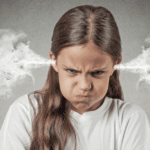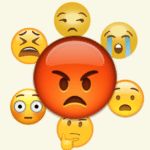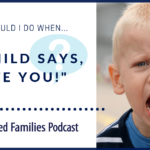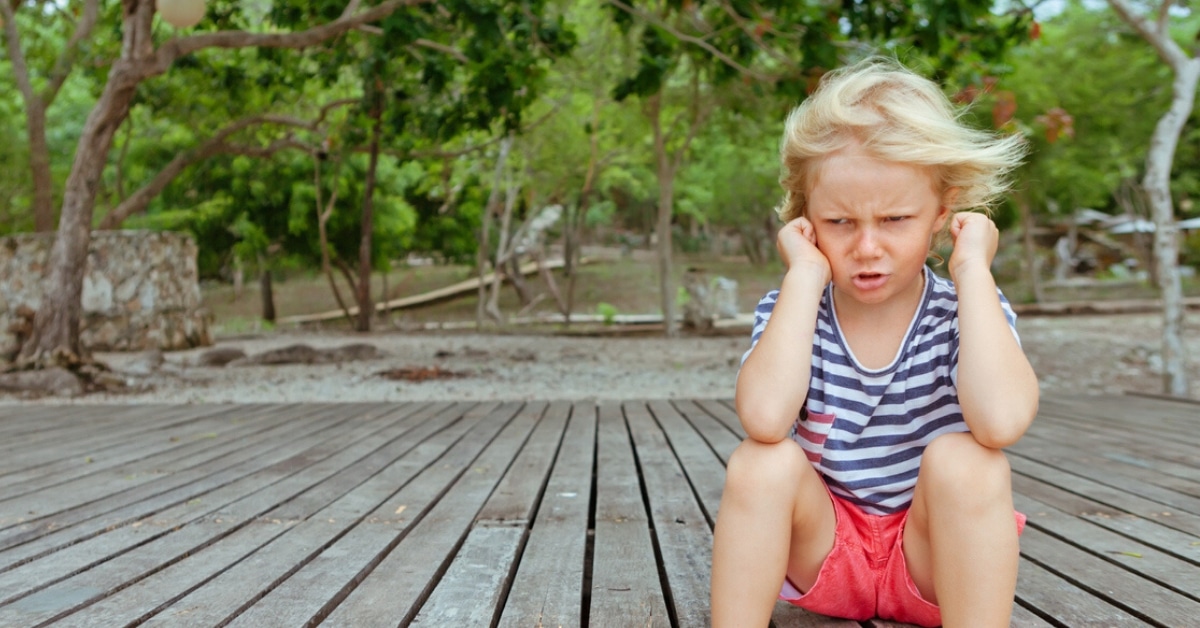
Why Is My Child So Angry? The #1 Unexpected Reason & Practical Steps to Take
Moving from unhealthy to healthy anger responses
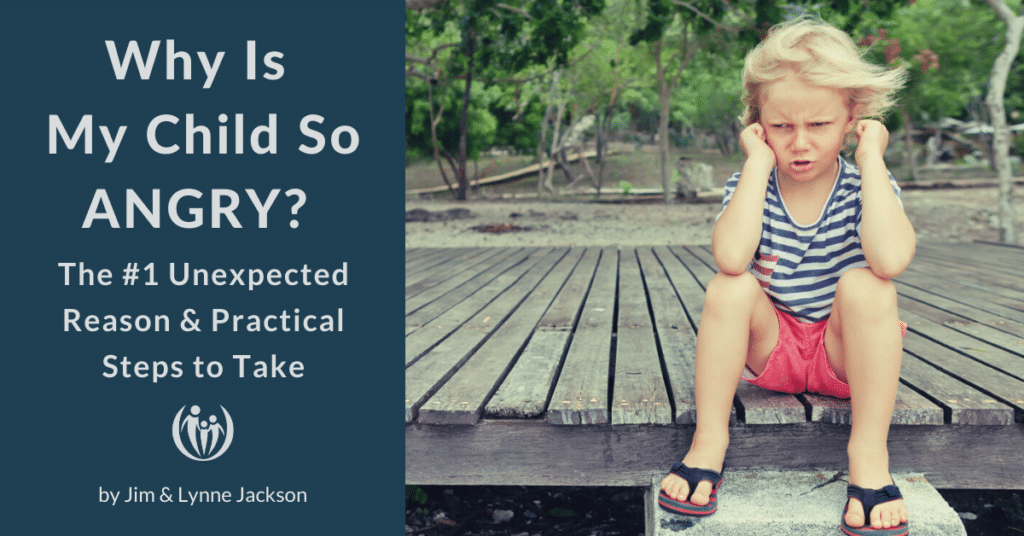
Have you ever asked yourself, “Why is my child so angry all the time?” Some kids really struggle with their anger. This is not an indictment of your parenting. There has been an epidemic increase in anxiety in recent years.
“About 11.6% of kids had anxiety in 2012… But during the pandemic, those numbers nearly doubled, such that 20.5% of youth worldwide now struggle with anxiety symptoms, according to a meta-analysis of 29 studies reported in JAMA Pediatrics.” (published 10/22)
But why would anxiety cause your child’s anger?
“Anxiety is one of those diagnoses that is a great masquerader,” explains Laura Prager, MD, director of the Child Psychiatry Emergency Service at Massachusetts General Hospital. “It can look like a lot of things. Particularly with kids who may not have words to express their feelings, or because no one is listening to them, they might manifest their anxiety with behavioral dysregulation.”
A coaching client of Lynne’s stated, “When we realized our son’s anger was caused by underlying anxiety, we learned to work with him instead of against him. And that was a game changer!”
This means your angry child might well be anxious under the surface. They may be extra sensitive and/or have underlying stress that’s hard to express. Perhaps they simply haven’t learned better ways to understand and articulate their anger.
When a child is upset or feels threatened, their ability to accurately process what others are saying decreases, as does their ability to identify and articulate what is upsetting them. Fighting often feels like the safest option when brains are in fight/flight.
So even in stable, connected homes, sensitive kids may be anywhere from anger-prone to seemingly angry all the time. Even socks can lead to anger outbursts! (And is it really the sensation of the socks, or maybe the stress of getting out the door, or anxiety about the teacher at school, or… or…)
Certainly, no child is truly “angry all the time!” but if it feels like you are frequently asking yourself, “Why is my son so mad at me?” Or, “Why is my daughter always so angry?” take a deep breath. There’s practical help for you.
#1 reason your child might seem so angry? They don’t have the tools to express anger well.
If you’re sitting here, reviewing the events of your day, and wondering why on earth it feels like your child is “always angry,” pause for a second. No matter how well-intentioned you are, if you have a passionate, intense child, it’s easy to get into a cycle of reactions that looks a bit like this:
➡Child gets mad and hits or yells mean words.
➡Parent gets mad and sends the child to his room.
➡Child bangs on the door.
➡Parent takes away (__) for the rest of the day.
Sound familiar? It’s a pretty familiar script in a lot of homes.
The thing is, getting mad isn’t necessarily wrong. But hitting is. It’s also damaging to be verbally aggressive with loud, hurtful words. But trying to suppress aggressive behavior leaves kids feeling managed, misunderstood, and lacking the skills they need. So, how do you help kids express anger in more helpful ways?
Common parenting defaults don’t address what’s happening inside the child or the parent. For your responses to be truly helpful, it’s generally best to build on insight into what’s happening under the surface.
Parents, admit you’re mad and model taking a break.
Often, the way parents navigate their child’s anger gives kids the unfortunate impression that the anger itself is both the problem and the solution. Like this: “You settle down! This is not OK!” And often, if it continues, there is some type of stern punishment for that anger.
This may grow a belief that the child’s big anger is the problem, and the adult’s more refined anger is the solution.
At this point, you may say, “No, I’m not angry at my child! I’m just a little bit annoyed.” But in a child’s view, this is just a more grown-up way of being angry. So, if it seems easy to judge a child’s angry behavior as sinful, it’s more helpful to start by thoughtfully looking inward.
23 Search me, God, and know my heart;
Psalm 139:23-24
test me and know my anxious thoughts.
24 See if there is any offensive way in me,
and lead me in the way everlasting.
Suppose you recognize (like we did in our early parenting) that your anger is overflowing and aggravating your child’s anger. In that case, you’ll find lots of grace and practical help in the resources on our website:
- Blog post: 6 Practical Tips To Tame Your Temper
- Blog post: Are You or Your Child Addicted to Anger?
- Podcast: What Causes Anger Issues in a Child? | Ep.46
Responding to an angry child with angry intimidation and control can cause you to miss an excellent opportunity for growth. In tense situations, parents can help a child feel understood and validated and then guide their child to problem-solve the source of their anger.
If you haven’t admitted to your child (ideally with a steady voice) that you’re feeling pretty mad and need to take a break, your child may be learning that anger is so bad that it’s scary or shameful even to admit the feeling.
Your child knows you’re angry. So…
- Model what it looks like to admit you’re mad by saying it out loud.
- Take your own break if needed.
- Come back ready to empathize and solve the problem with your child.
We learned a simple response that captured these ideas: “I’m feeling a little angry right now, and I want to be respectful to you, so I’m going to take a little break.”
You can also look for other opportunities to model wise, respectful anger and take a self-calming break when your anger has nothing to do with your child. (Your child may learn best by observing you when there is no potential stress or shame that your anger is about them.)
Through this process, kids learn that anger is excellent for identifying a problem, but calm thinking is excellent for solving it.
What happens if a child thinks anger is bad?
Anger is a natural feeling. If your child grows up believing that anger is bad, they will likely not develop the skills needed to navigate their anger or express it in more constructive ways.
Intense anger means kids’ brains are in a fight-or-flight response because they feel threatened. Most kids who aren’t taught healthy ways of responding to their anger do one of those two things – they’ll fight, or they’ll flee:
- They either frequently fight and hurt others (physically or verbally) to gain control…
- Or they habitually “flee” (avoid conflict – do anger indirectly or stuff/suppress feelings) to escape the pain of conflict.
(There is a full spectrum of responses to threat: fight/flight/freeze/fawn, but the freeze/fawn responses are less applicable here.)
The child who fights
Habitual fighters look angry. These children find significance in the fight for power and control. They become overtly angry and aggressive about many things. They often react quickly and unreasonably to the things that anger them.
Almost every child’s first expressions of anger are some form of fighting. But if kids are regularly sternly confronted or angrily punished for these expressions, they quickly learn from their parents’ example that anger is a weapon.
They either keep fighting harder to win or learn to flee because they know they can’t win in direct conflict with an adult.
The child with indirect anger: When fight and flight combine
Kids who still want to vent anger but want to avoid direct conflict may learn to combine the fight and flight responses by doing both at the same time. Kids’ anger goes “underground,” and hurt and frustration bubble up to the surface in indirect anger! This can also be referred to as “passive-aggressive” anger. These children display anger about one issue by directing the anger at someone or something else, or they may appear to cooperate while finding sideways ways to be defiant.
“…children learn that compliant defiance can be more satisfying (and less likely to result in punishment) than tantrums, whining, and other disruptive ways of expressing emotion. It can exist as part of a normal, passing stage of development or, if unchecked, can develop into a way of life.”
It can be confusing and complicated to sort out what the anger is even about. It’s quite probable that the kids don’t even know what it’s about. Their behavior is simply acting out confusing, pent-up feelings. So maybe you’re the parent that keeps asking yourself, “Why is my child so angry?” but perhaps you’re also asking questions more like, “Why is my child so irresponsible… or careless… or slow…” and it’s actually an indicator that your child may be struggling with indirect anger.
Sometimes, indirect anger can be more obvious…
- intentional mistakes, “accidentally” damage things (because things are easier to control than people—and they don’t fight back)
- rough behavior with a pet
- yell at a sibling when they’re actually mad at you
- do things in public to embarrass you
- sarcasm
- manipulation
And sometimes more disguised…
- “forget” to do what you’ve asked
- fail at things that are important to you
- dawdle, be late, procrastinate
- pretend not to hear you
In my (Jim’s) work with high-risk teens, I regularly saw indirect anger. Teens angry at their teachers vandalized the school. Bullied students bullied others. In our parent support groups, parents would ask us why their child was so angry, but getting a handle on this kind of complicated, confused expression of anger was hard. By the time it was coming out sideways, there was usually a history of baggage and unresolved anger from the past.
The child who flees conflict by suppressing anger
Without guidance in healthy ways to express anger, it may get suppressed and manifest in more dysfunctional ways than the child who looks angry all the time.
The most troubling thing is when kids “take flight” and may not even seem angry at first glance. They may be compliant with our requests. They may not like what’s being asked of them or the feeling of being controlled, but they don’t have the will or energy to resist.
Kids who flee may disappear or cover their ears when conflict starts. They often get quiet. They get sad. If anger gets suppressed, it can either simmer in silent resentment or turn inward in shame as hopelessness sets in. These kids may withdraw into worlds of their own and do little, if anything, to let us know they’ve been angry. Perhaps the most common examples were those youth who had lots of anger about their lives but turned the anger on themselves with self-harm or self-neglect.
Responding to suppressed anger is complex and beyond the scope of this post, but the point is the importance of embarking on the long, messy process of guiding your child toward healthy, helpful ways to express anger.
This is vital because Christians tend to avoid anger. It can be fed by beliefs like, “If we walk in the Spirit, we won’t get angry.” Hmmmm.
- David was angry at Goliath’s mockery of God.
- Job’s friends told him to stuff his anger and repent, but Job vented his anger at God. God confronted the foolish friends and honored Job for his faith.
- And… Jesus got angry on numerous occasions!
Scripture doesn’t say, “Don’t be angry!” Instead, we are instructed, “Be angry, but don’t sin, and don’t let the sun go down on your anger.” Ephesians 4:26 The mandate is to be angry at the right things and to resolve your anger well.
One of my (Jim’s) mentors once taught me, “Anger is like dynamite. Used carelessly, it can cause a lot of unwanted damage, but under God’s guidance, it can be powerfully helpful.”
Whether your child’s anger is expressed directly or indirectly or it’s suppressed, your job is to teach your child a constructive way of expressing anger.
Check where you and your child are on the anger spectrum
Here’s a graphic that depicts the spectrum of possibilities for expressing anger.

Wherever your child’s expression of anger lands on this spectrum, the goal of training them in wise, respectful anger is to help them make progress toward the constructive (green) side of the spectrum. And this messy process happens in many baby steps!
For example, when my (Lynne’s) coaching clients report that their child is using more hurtful, aggressive words, I usually find out they are hitting less. The hurtful words are actually the next small step forward on the anger spectrum toward direct, respectful assertiveness. And their initial attempts at assertiveness and self-advocacy will likely be loud, angry, and not as respectful as you’d like. Focus on the small amount of progress, which will beget more progress!
During this long process, you can talk with your kids about your intention to model and teach “respectful anger” as you work to identify feelings and solve frustrating problems together.
“A recent randomized control trial with parents of pre-adolescents found that reductions in unsupportive responses to their children’s anger, fear and sadness, resulted in decreased internalizing and externalizing problems.”
What??? Let’s translate that into simpler, positive terms: Learning to validate and wisely guide your child’s anger decreases internalizing (suppressed anger, shame, depression) and externalizing (anger outbursts).
So, how does this process happen? Children (and adults) must learn first to be assertive and then gradually learn to be restorative with their anger.
Where children start on the anger spectrum
As mentioned, kids’ first expressions of anger are almost always aggressive, with some form of fighting or tantrum. Their response to the big angry feelings inside of them falls somewhere in the middle of the spectrum. And it’s almost always ugly and unrefined.
Selfish anger resides in all of us, but remember: Messy, hurtful anger might be the best a child knows how to do with the skills they have. It’s important not to punish it!
Punishing anger actually inclines a child toward the unconstructive (red) side. Kids become more hurtful, more indirect, or more silent. They’re not learning new skills for expressing anger, so they begin to bottle up their angry feelings.
Things might look better temporarily, but they’re not better.
We have a FREE downloadable and printable PDF of a kids’ version of the anger spectrum and some practical suggestions for you. Wait for a calm moment and have a light-hearted discussion focused on authentic sharing and modeling, not on correcting your child’s anger. Elevate the value of what you’re hoping you’ll all learn: solving and reconnecting during conflict.
And then, when a not-so-calm moment happens…
FREE Downloadable PDF
Check out this FREE downloadable and printable PDF, “Teaching Respectful Anger,” which you can use to help your child move from unhealthy to healthy anger responses.
Teach your child healthy responses to anger
1. Validate angry feelings
The first step of progress toward the spectrum’s constructive side is validating your child’s anger. Validating children’s anger doesn’t mean you agree with their perspective. It means you accept their feelings. You understand what it’s like to be angry and why they might feel that way. You might say something like, “This is hard. You seem pretty angry right now. Is that right?”
Validating children’s anger doesn’t mean you agree with their perspective. It means you accept their feelings.
When you say these words, you demonstrate that you see the feeling, and it’s okay to admit to that feeling. You’re not shaming your child for anger but validating how that feels. You might go on, “I get it! I sure get angry sometimes, too.”
An empathetic approach often takes the wind out of a child’s “anger sails.” It allows them to feel anger and express it without a power struggle.
You can also simply let your child’s anger take its course without judgment, as you just stay calmly present. Consider this angry, “It’s not fair!” outburst from a psalmist at his heavenly Father.
“I was brutish and ignorant;
I was like a beast toward You.
Nevertheless, I am continually with You;
You hold my right hand.
You guide me with your counsel,
and afterward, You will receive me to glory.”
Psalm 73:22-24
What a beautiful sequence, where the Father calms His angry child with patient presence and then guides him with wise counsel.
2. Guide toward healthy expressions and solutions
As naming the feeling becomes a habit, it teaches kids that there is “grace space” to wind down and more appropriately express what’s going on inside of them. Once your child has begun to calm down, you can start to invite them to the growth side of the spectrum: respectful assertiveness and then problem-solving and reconciliation.
You can ask more questions like this using a calm voice:
- How can I help you?
- How might you clearly say what it is you want?
- Can you give me your ideas about how to solve this?
3. Look for later teaching opportunities
Not everything needs to be addressed in the moment when your child gets angry.
Look at how wisely Jesus dealt with His arguing disciples. I’m pretty sure He knew what was happening in the angry exchange between them, but He waited for just the right teaching opportunity:
“Jesus and His disciples came to Capernaum. When He was in the house, He asked them, ‘What were you arguing about on the road?’ But they kept quiet because, on the way, they had argued about who was the greatest. Sitting down, Jesus called the Twelve and said, ‘Anyone who wants to be first must be the very last and the servant of all.’ He took a little child whom He placed among them. Taking the child in His arms, He said to them, ‘Whoever welcomes one of these little children in my name welcomes me; whoever welcomes me does not welcome me but the One who sent me.’”
Mark 9:33-37
…an opportunity for teaching that was not wasted by scolding their anger and selfishness when they were arguing.
The times when emotions run high are potent opportunities to demonstrate grace and give valuable guidance to your kids. Those sensitive, passionate kiddos who are more prone to anger have tremendous potential to harness their intense emotions for God’s purposes over time. So keep that opportunity in the front of your mind as you work with them to validate, connect, and teach.
At first, this approach may be more challenging than it sounds. But there is abundant hope! We’ve had so many families over the years tell us how they’ve grown in peaceful, respectful conflict resolution in their family.
Gradually, as kids grow to believe that you are for them and not against them, they will learn to be wise in their anger, to be angry, but not sin. And maybe even over time, they’ll learn to use that passionate anger to do something about worthy causes and injustices, just like Jesus did!

Do you have a child with EXTRA needs?
Parenting isn’t easy, but when you’ve got an extra INTENSE or SENSITIVE child with big feelings… it’s even harder.
The Sensitive and Intense Kids online course will equip you to parent well, even with these unique kiddos.


